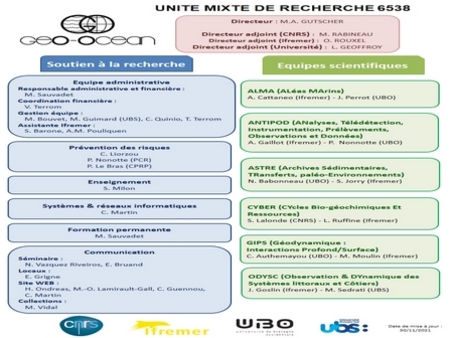Tuesday 4th April : the treasure of the dive 7
We were searching for old hydrothermal sites, we found an ancestor!
One of the objectives of the HERMINE cruise is to find extinct or fossil hydrothermal sites to better understand their history and their evolution in space and time. It is with this spirit in mind that Ewan Pelleter, Julien Fenouil and Guillaume De Parceval went for the 7th Nautile dive. They had the daunting task to find an old mineralized spot described as a low temperature deposit (< 50°C; Hydrosnake 1988 cruise)
Around 2000m depth, they quickly discovered several old mounds, relatively flat with a thick sediment cover. The observation of these mounds allow them to distinguish numerous orange-reddish stains, which, without giving any indication on temperature, bear witness the presence of a hydrothermal deposit.
The answer on the deposit formation temperature came 5 minutes before the end of the dive from the tiniest clue. During the last sampling in an area covered with sediments, Julien noticed a tiny fragment (2x3 cm) of an emerald green color. This sample, the most important of the dive, is a copper oxychloride called atacamite.
This mineral forms by oxidation of copper sulfides (i.e. chalcopyrite) that forms over 300°C. The area explored during this 7th Nautile dive is made of very old fossil, high-temperature hydrothermal systems. Several million years ago, these systems were probably as active as TAG and Snake Pit sites, and were most likely hosting a luxurious fauna.

